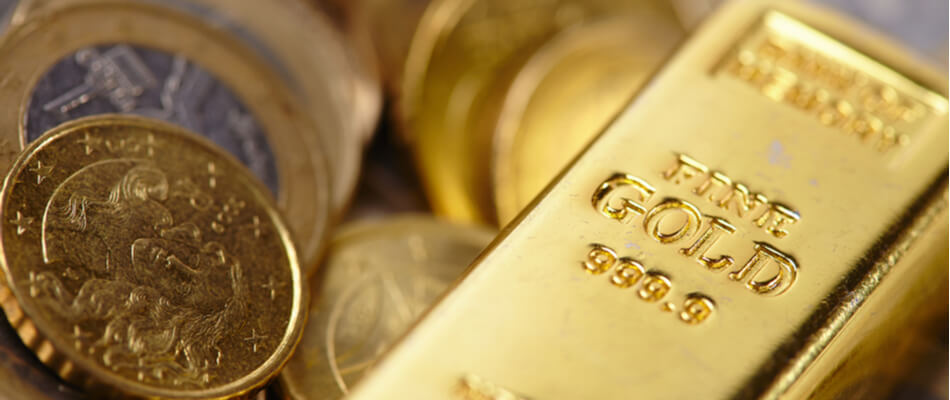Return on investing in gold
Gold is a popular investment product because it provides a lower risk. This is because this precious metal has a low correlation with bonds and shares. As a result, gold performs well at times when other investments have a lower value. Investing in gold can yield a nice return.
But does gold also provide a higher return? And what percentage of your assets is best invested in precious metals? The British newspaper Telegraph investigated. The editors created 4 different investment situations, with 5%, 10%, 15% and 20% of the assets in gold. They used this to see which of these situations, since 1999, Brexit and the fall of Lehman Brothers, had the highest return percentage.
The stocks in these situations are based on the FTSE World Index, a combination of stocks from all over the world. The situation is rebalanced every year, so that you can maintain the right ratio between the different precious metals and stocks.
Return on investment in gold: The long-term scenario
The research also provided evidence that buying gold is a good investment choice for the long term. If you invested half of your assets in the yellow metal and the other half in stocks in 1999, you achieved a return of 321%. If you compare this to an investor who invested 95% in stocks and only 5% in gold, this person achieved a return of 228% over the same period. When you look at the annualized basis, that is a return of 6.69% per year for the situation with 50% in gold and 4.68% per year for the situation with only 5% in gold.
De Lehman Brothers
Gold offers longer-term safer options against inflation, but can also have major short-term disadvantages. For example, look at the fall of Lehman Brothers in 2008. Here, the wallet with the largest presence in shares provided the highest percentage return. Gold performed better in the first years of the crisis, although the values of shares have recovered well in recent years.

Buying gold for the long term
The research results show that precious metals are mainly an interesting investment for the long term. In the short term, there is a greater chance of a lower return percentage. While a precious metal such as gold can withstand inflation very well over a longer period. The gold price has risen from $35 to $1,236 per troy ounce since 1971. Converted, this amounts to a return percentage of 8% on an annual basis.
Precious metals are tangible assets that can be traded outside the financial system. This is an important feature, since you need a third party to trade stocks and bonds. In times of crisis, precious metals can therefore be invaluable. However, a disadvantage of precious metals is that they cannot yield interest or dividends. On the other hand, you do not have any risk from the counterparty. By combining these points, it is certainly not a bad idea to invest your assets in precious metals.
Compare brokers and start investing in commodities
Are you excited about investing in commodities, such as gold, after reading this article? Compare brokers where you can trade in commodities and find the broker that suits you best!